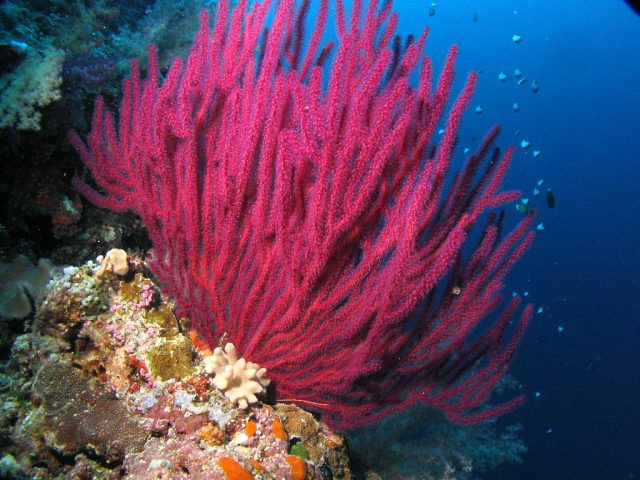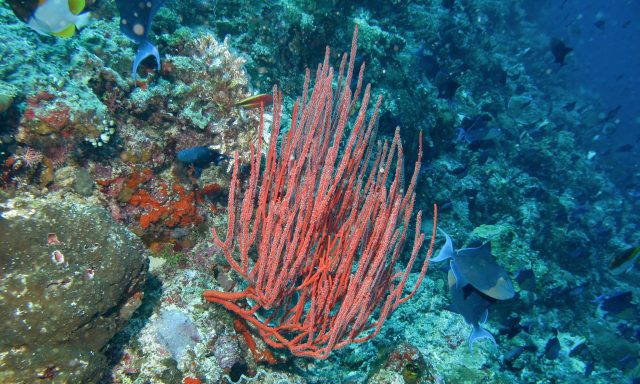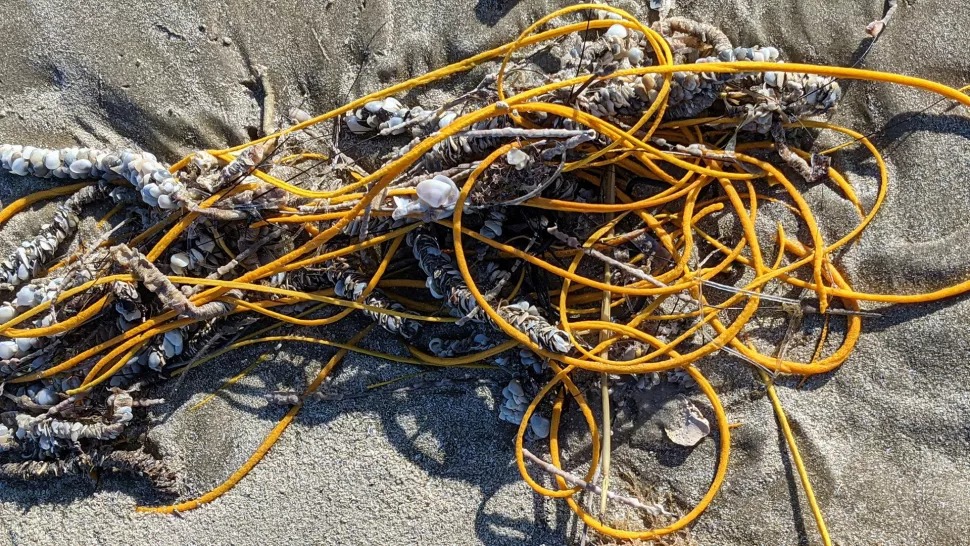The Earth’s oceans are full of wonderful and mysterious life. Sand dollars, coral, starfish and sea urchins are just a few of the marine creatures that are alive but do not swim.
Another fascinating creature found on east coast American beaches from New Jersey south to the Gulf of Mexico is Leptogorgia virgulata known as the colorful sea whip. It looks like a tall clump of grass in the water but once washed up on shore it resembles a pile of discarded rope.
According to livescience.com, a National Park Service guide at the Padre Island National Seashore near the Gulf of Mexico, Rebekah Claussen, found what looked like an old yellow rope or fishing net washed up on shore in February 2021. In fact, it was a sea whip that had died and washed up onto the beach.

Colorful sea whips are a type of coral that live close to the shoreline at depths of about ten to sixty six feet. According to tybeemarinescience.org, they attach themselves to rocks shells, reefs and other hard surfaces and can reach three feet tall. Found in shades of yellow, red, white and purple they are suspension feeders meaning they grab food as it comes along with the current, mostly plankton.
As with the hard corals that have rigid skeletons, sea whips provide an important shelter for fish such as the black sea bass, groupers, and snappers as well as brown barnacles, shrimp and oysters. The creatures have eight tentacles around a central axis.
Dnr.sc.gov tells us that along each stalk are polyps alternating in rows on two sides of each branch with the rows separated by grooves on older main branches. In colonies they secrete proteins that create a dark skeleton from which the stalks emerge.
They can tolerate low salinity but prefer the high saline water found in estuaries, sounds and tidal creeks. They inhabit the manmade artificial reefs placed near shorelines to aid marine life along with older shipwrecks, discarded pipes and cargo that had at one time fallen into the sea.
Currently, the worst predators are manmade such as shrimp trawl nets, recreational fishing, chemical runoff from urban, agricultural industrial areas and dredging. Hurricanes and other severe storms can have a negative impact on coral as well.
Colorful sea whips population numbers have not been studied until recently so no changes can be detected but they are known as the most abundant species that live on the hard bottom of the ocean.
According to ncbi.nlm.nih.gov, there is a correlation between the health and numbers of sea whips and the numbers of fish that live in the area.
Growth rings similar to trees have been observed and are assumed to be annual, helping scientists to estimate an age for the animal. They exude protective chemicals to deter algae and barnacles from taking hold as well as the settlement of larvae and nibbling fish.

Included in the Gorgonacea family, there are about one thousand and two hundred different species of sea whips. Starting in about 2016, Rebecca P. Wenker and Professor Bradley G. Stevens of the Department of Natural Sciences, University of Maryland Eastern Shore, Princess Anne, MD in the U.S. began a study of sea whip corals and published their findings in February 2020 at ncbi.nlm.nih.gov.
The majority of the sites were located in the waters near Ocean City, Maryland. The scientists studied colony complexity, length, age, and growth of sea whips from four artificial reef sites in the mid-Atlantic. Their findings indicated that each site was similar in complexity and it allowed them to set a baseline for future studies.
Another Article From Us: Witch-Battling Bundle Discovered During 16th Century House Renovation
Because of their abundance sea whips are collected and sold to aquarium enthusiasts and adapt well to captivity. They run anywhere from about twenty dollars to one hundred and fifty dollars depending on the size and color and usually come from Florida.
